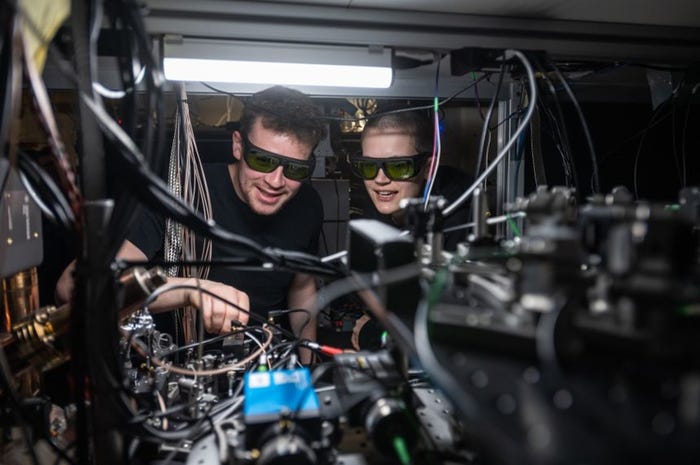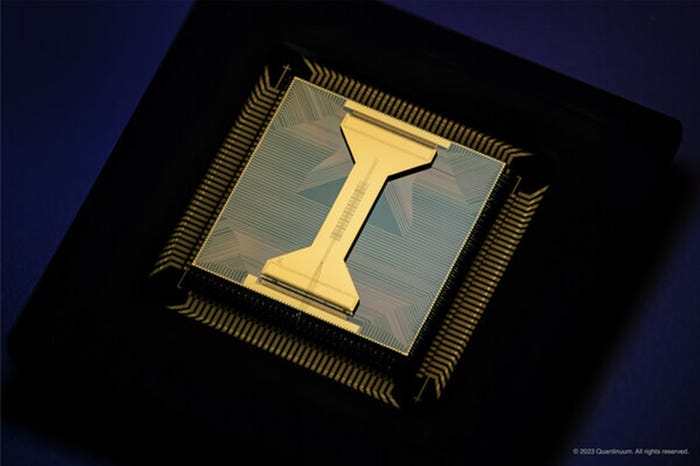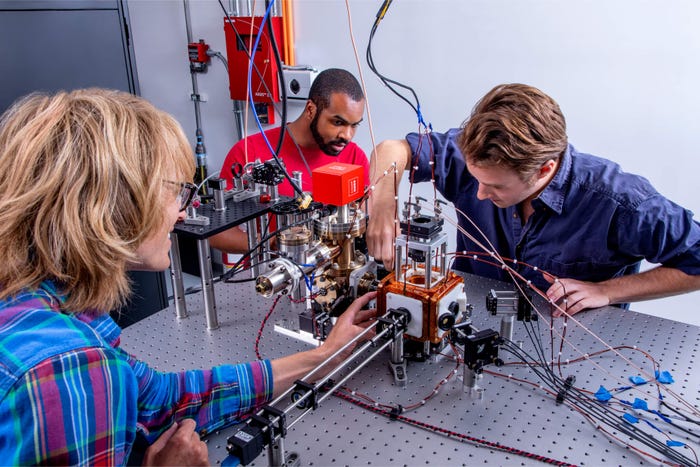
Connects decision-makers and solutions creators to what's next in quantum computing
Researchers Demonstrate Step Toward Quantum AdvantageResearchers Demonstrate Step Toward Quantum Advantage
JPMorgan Chase, Argonne National Laboratory and Quantinuum Show Quantum Optimization Algorithm Speedup
May 31, 2024

Researchers at JPMorgan Chase, the U.S. Department of Energy (DOE) Argonne National Laboratory and Quantinuum have demonstrated tangible speedup in a quantum algorithm used for many optimization use cases.
The quantum approximate optimization algorithm (QAOA) has been used on many quantum computers and is often used as a performance benchmark. It has potential applications for optimization in industrial applications including logistics, telecommunications, financial modeling and materials science.
“This work is a significant step towards reaching quantum advantage, laying the foundation for future impact in production,” said JPMorgan Chase head of global technology applied research Marco Pistoia.
In a paper published in Science Advances, the team explained they set out to discover whether a quantum algorithm with low implementation costs could provide a quantum speedup over the best-known classical methods.
They applied QAOA to a problem used to investigate the behavior of physical systems, signal processing and cryptography. They found that as the problem got more complex, the time to solve it using quantum methods grew at a slower rate than using classical techniques.
JPMorgan Chase and Argonne researchers developed a simulator to demonstrate the algorithm’s performance at scale in an ideal, noiseless environment. It was built on the Polaris supercomputer, one of the most powerful in the world, at the Argonne Leadership Computing Facility (ALCF).
“The large-scale quantum circuit simulations efficiently utilized the DOE petascale supercomputer Polaris located at the ALCF,” said Argonne computational scientist Yuri Alexeev. “These results show how high-performance computing can complement and advance the field of quantum information science.”
To demonstrate that the method can transfer onto Noisy Intermediate-Scale Quantum (NISQ) computers, the researchers demonstrated a small-scale implementation on the Quantinuum System Model H1 and H2 trapped-ion quantum computers. The team reduced the impact of errors on algorithmic performance by up to 65%.
“Our long-standing partnership with JPMorgan Chase led to this meaningful and noteworthy three-way research experiment that also brought in Argonne National Lab,” said Quantinuum chief product officer Ilyas Khan.
“The results could not have been achieved without the unprecedented and world-leading quality of our H-Series Quantum Computer, which provides a flexible device for executing error-correcting and error-detecting experiments on top of gate fidelities that are years ahead of other quantum computers.”
You May Also Like




